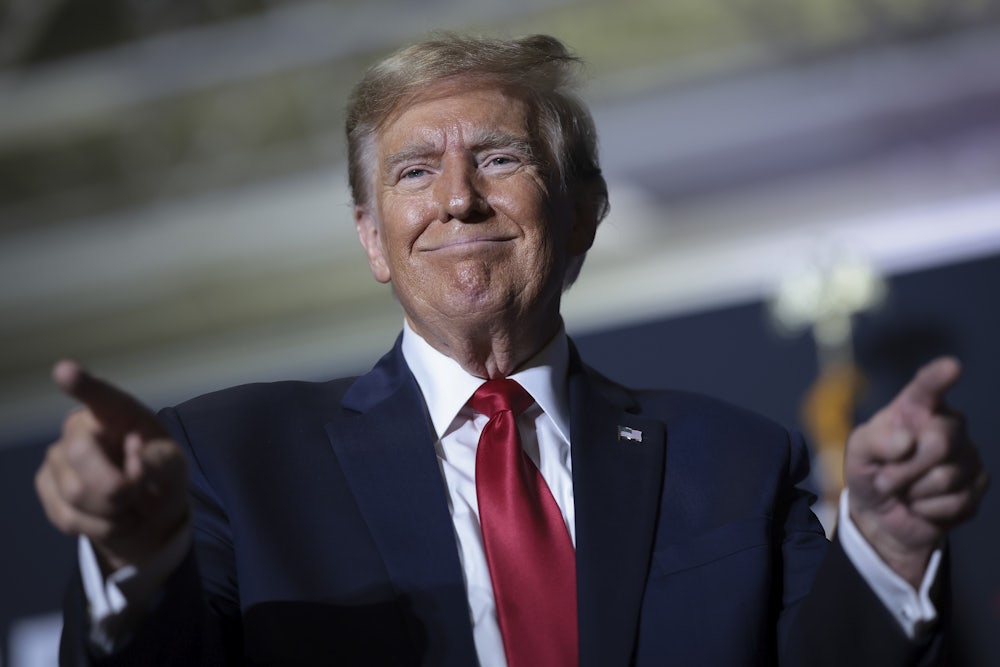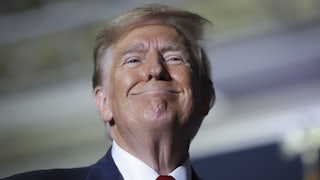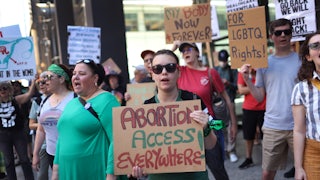Mitt Romney probably blew his chances of becoming president in May 2012 when he suggested to a roomful of wealthy people at a Boca Raton, Florida, fundraiser that America spoils its lower-income citizens by not taxing them enough. “Stupid, stupid, stupid,” Romney wrote in his diary after Mother Jones’s David Corn reported his remarks, according to McKay Coppins’s 2023 biography, Romney: A Reckoning. Now Donald Trump has amplified Romney’s error by stating explicitly that the progressive income tax ought to be replaced by tariffs. That would do Romney one better by returning the United States economy to the nineteenth century.
The Washington Post’s Catherine Rampell was quick to point out that eliminating the income tax and substituting revenue from tariffs would constitute “a huge tax increase on the lower/middle income classes.” Unlike Romney, Trump seldom gets held accountable for anything that comes out of his mouth, so maybe he’ll sail past this gaffe. Whatever the fallout, Trump’s suggestion is stupid, stupid, stupid.
During the past four decades, the U.S. income tax got less progressive at the high end but more progressive at the low end, thanks to the Earned Income Tax Credit and the Child Tax Credit. Conservatives love that the top marginal rate has fallen from 70 percent in 1980 to 37 percent today, and that other taxes that target the wealthy, such as the corporate tax, the capital gains tax, and the inheritance tax have all come crashing down. But the right doesn’t like that the proportion of the population too poor to pay income tax doubled after 1980 from about 20 percent of the population to about 40 percent. (In Mitt’s heyday, famously, it was roughly 47 percent.) Conservatives bemoan this even though the change resulted from conservative policies. The Earned Income Tax Credit was signed into law by Republican Gerald Ford and expanded by none other than Republican Ronald Reagan, both presidents hailing it as a conservative alternative to welfare—as did Democrat Bill Clinton when he expanded it further. The Child Tax Credit was created under Clinton but championed by pro-family conservatives. (Congressional Republicans now refuse to restore its Covid-era expansion, which nearly halved the child poverty rate.)
“Poor folks should pay more taxes” has a Dickensian ring to it, so conservatives seldom say that out loud. A memorable exception was a 2002 Wall Street Journal editorial titled “The Non-Taxpaying Class,” which branded those unable to earn enough to pay income tax “lucky duckies.” Various commentators (including me) had a field day with that, driving this doctrine underground, where it has largely remained ever since—with the exception of Romney, of course. Thereafter Republicans spoke of this only through the code phrase, “broaden the tax base”; when called on it they pretended they meant only to close certain (never specified) loopholes, not to raise taxes on the proletariat. That was Romney’s strategy in 2012 until he blew his cover by griping about the 47 percent,
who are dependent upon government, who believe that they are victims, who believe that government has a responsibility to care for them, who believe that they are entitled to health care, to food, to housing, to you name it.… These are people who pay no income tax.
The idea was that people who don’t pay income tax inhabit a sort of Skinner Box that trains them to regard government as cost-free and munificent rather than costly and burdensome, and therefore to vote Democratic. Never mind that these people still pay regressive payroll and assorted state taxes and that the higher end of this cohort has been lately voting Republican.
More respectable conservatives don’t suggest, as Trump does, that the income tax ought to be replaced with tariffs (partly because they tend not to favor tariffs—or didn’t before Trump came along). But the respectable right has long chafed at the progressive income tax. It prefers an across-the-board flat tax of, say 17 percent, or, failing that, to collapse the existing seven tax brackets into, say, two, as the Heritage Foundation’s “Mandate for Leadership 2025” (a sort of shadow manifesto for the Trump campaign) proposes. Such proposals get sold as “tax simplification,” but their chief value to conservatives is that they make the tax code more regressive.
Were there no income tax already, it’s doubtful, in this dismal political moment, that Republicans would permit one to be created. Before 1913, the United States had no income tax except, briefly, to finance the Civil War, with two brackets of 3 percent and 5 percent. Virtually all federal revenue came from tariffs on manufactured goods. These were popular in the industrial Northeast because they protected the livelihoods of factory workers, but they were unpopular among farmers (especially in the South) because they enjoyed no parallel protection; for them, tariffs served only to raise prices.
Much of the impetus for the Populist movement of the late nineteenth and early twentieth centuries was agrarian resistance to high tariffs. “The man who says, ‘Impose upon somebody else a tax for my benefit,’ says what the pickpocket says,” Representative William Jennings Bryan, Democrat of Nebraska, declaimed in 1892. “But the man who says, ‘Take away the burdens imposed on me for other people’s benefit,’ says simply what every honest man says, ‘Let me alone to enjoy the results of my toil.’”
Congress tried to revive the Civil War income tax in 1894, but the Supreme Court ruled it unconstitutional. It took a constitutional amendment (proposed in 1909 by a Republican, President William Howard Taft!) to bring back the income tax. When reintroduced in 1913, it was very low, with brackets of 1 percent and 6 percent, and limited to high incomes (in today’s dollars, the two thresholds were $96,000 and $16 million).
The modern income tax, with employer withholding and the federal government largely eliminating its reliance on regressive tariffs and excise taxes, was created in 1943 by President Franklin Roosevelt. Roosevelt justified it as a wartime measure, much as President Herbert Hoover justified an earlier increase in 1932 as an emergency measure necessary to fight the Great Depression. Both presidents set the top marginal rate well above current levels: Hoover at 63 percent and FDR at 90 percent. Roosevelt had actually sought a top bracket of 100 percent, complementing the minimum wage he’d codified in 1938 with a maximum wage of $25,000. If Biden’s pledge to cancel the Trump tax cut for incomes above $400,000 shocks conservatives, they should consider that Roosevelt’s proposal prohibited any American earning one cent above today’s equivalent of $465,000.
Even today, tariffs are a regressive tax, imposing a burden more than twice as great on the bottom 10 percent as on any other income group, according to a 2017 study by economists Katheryn Russ of University of California Davis, Jay Shambaugh, currently undersecretary for international affairs at the Treasury Department, and Jason Furman of Harvard (and a former chairman of the Council of Economic Advisers). A February 2024 study by economists Miguel Acosta of the Federal Reserve and Lydia Cox of the University of Wisconsin further found that, going back to the 1930s, tariffs on luxury goods have been significantly lower than tariffs on low-end goods. “For example,” they wrote, “the tariff on a $400 handbag made of reptile leather is 5.3 percent, while the tariff on an $8 plastic-sided handbag is 16 percent.”
Tariffs may be necessary in limited instances to encourage the growth of certain industries (as the Biden administration is trying to do with electric vehicles) or to protect vital supply chains (as Biden is trying to do with microchips). Even in those instances, though, the prospect of a trade war makes me a little queasy. To embrace tariffs, in the modern age, as a source of revenue is simply insane. Trump has already proposed a 10 percent tariff on all foreign goods that, by one estimate, would cost the median American household $1,500 per year. Writing in The Wall Street Journal, Richard Rubin and Alex Leary calculate that to replace the $2.5 trillion the IRS collects annually in income tax, tariff rates would have to be 70 percent or higher. Congratulations, lucky duckies. Trump wants to hit you with a 70 percent tax hike! Don’t say I didn’t warn you.




